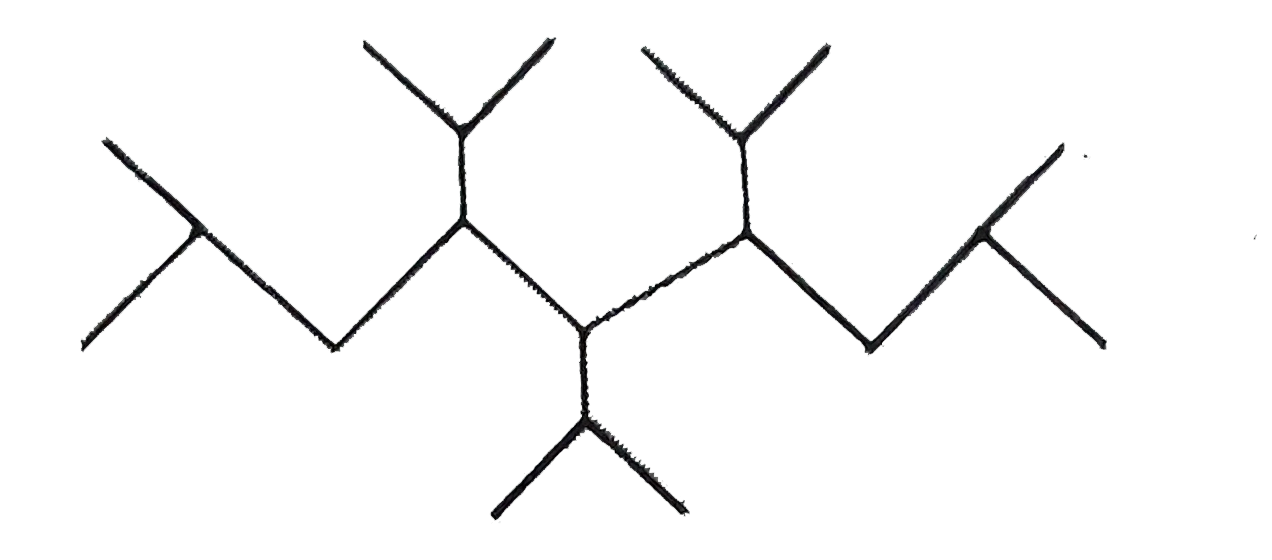How will you distinguish 1∘ and 2∘ hydroxyl groups present in glucose? Explain the reactions.
To distinguish between the primary (1°) and secondary (2°) hydroxyl groups present in glucose, we can utilize the different reactivity of these hydroxyl groups towards oxidation. Here’s a step-by-step explanation of the process:
Step 1: Understanding the Structure of Glucose
Glucose has the following structure:
- It contains an aldehyde group (-CHO) and five hydroxyl groups (-OH).
- The hydroxyl groups can be classified as:
- One primary hydroxyl group (at the end of the chain, -CH2OH).
- Four secondary hydroxyl groups (attached to the carbon atoms in the chain).
Step 2: Oxidation with Nitric Acid
To distinguish between the primary and secondary hydroxyl groups, we can treat glucose with nitric acid (HNO3), which is a strong oxidizing agent.
Step 3: Reaction of Primary Hydroxyl Group
- The primary hydroxyl group (-CH2OH) will undergo oxidation when treated with nitric acid.
- The oxidation of the primary hydroxyl group leads to the formation of a carboxylic acid (-COOH).
- The reaction can be summarized as:
R-CH2OHHNO3−−−→R-COOH
where R represents the rest of the glucose molecule.
Step 4: Reaction of Secondary Hydroxyl Groups
- In contrast, the secondary hydroxyl groups (attached to the carbon atoms in the chain) do not undergo oxidation under the same conditions.
- Therefore, they remain unchanged when glucose is treated with nitric acid.
Step 5: Observing the Products
- After the reaction, we can analyze the products:
- The presence of a carboxylic acid indicates that the primary hydroxyl group has been oxidized.
- The unchanged secondary hydroxyl groups indicate that they were not oxidized.
Conclusion
By treating glucose with nitric acid and observing the formation of a carboxylic acid, we can conclude that the primary hydroxyl group has reacted, while the secondary hydroxyl groups have remained intact. This allows us to distinguish between the two types of hydroxyl groups present in glucose.
---
Glucose has the following structure:
- It contains an aldehyde group (-CHO) and five hydroxyl groups (-OH).
- The hydroxyl groups can be classified as:
- One primary hydroxyl group (at the end of the chain, -CH2OH).
- Four secondary hydroxyl groups (attached to the carbon atoms in the chain).
To distinguish between the primary and secondary hydroxyl groups, we can treat glucose with nitric acid (HNO3), which is a strong oxidizing agent.
- The primary hydroxyl group (-CH2OH) will undergo oxidation when treated with nitric acid.
- The oxidation of the primary hydroxyl group leads to the formation of a carboxylic acid (-COOH).
- The reaction can be summarized as:
R-CH2OHHNO3−−−→R-COOH
where R represents the rest of the glucose molecule.
- In contrast, the secondary hydroxyl groups (attached to the carbon atoms in the chain) do not undergo oxidation under the same conditions.
- Therefore, they remain unchanged when glucose is treated with nitric acid.
- After the reaction, we can analyze the products:
- The presence of a carboxylic acid indicates that the primary hydroxyl group has been oxidized.
- The unchanged secondary hydroxyl groups indicate that they were not oxidized.
By treating glucose with nitric acid and observing the formation of a carboxylic acid, we can conclude that the primary hydroxyl group has reacted, while the secondary hydroxyl groups have remained intact. This allows us to distinguish between the two types of hydroxyl groups present in glucose.
Topper's Solved these Questions
- BOOK - NCERT EXEMPLAR ENGLISHCHAPTER - BIOMOLECULES EXERCISE - Matching The Columns2videos
BIOMOLECULES
- BOOK - NCERT EXEMPLAR ENGLISHCHAPTER - BIOMOLECULES EXERCISE - Assertion and Reason7videos
BIOMOLECULES
- BOOK - NCERT EXEMPLAR ENGLISHCHAPTER - BIOMOLECULES EXERCISE - Long Answer Type Questions5videos
BIOMOLECULES
- BOOK - NCERT EXEMPLAR ENGLISHCHAPTER - AMINESEXERCISE - LONG ANSWER3videos
AMINES
- BOOK - NCERT EXEMPLAR ENGLISHCHAPTER - CHEMICAL KINETICSEXERCISE - LONG ANSWER TYPE QUESTIONS5videos
CHEMICAL KINETICS
Similar Questions
How will you distinguish a phylloclade from a phyllode ?
View SolutionHow will you distinguish between a note and its echo?
View SolutionHow will you distinguish between urea and glycine ?
View SolutionHow will you distinguish between methanol and ethanol.
View SolutionHow will you distinguish pentane from 1-pentene ?
View SolutionHow will you distinguish between acetone and ethyl alcohol?
View SolutionHow will you distinguish between acetone and ethyl alcohol?
View SolutionHow will you distinguish between acetone and ethyl alcohol?
View SolutionHow many isopropyl groups are present in the parent chain ?
 View Solution
View SolutionHow will you distinguish between acetamide and glycine?
View Solution

